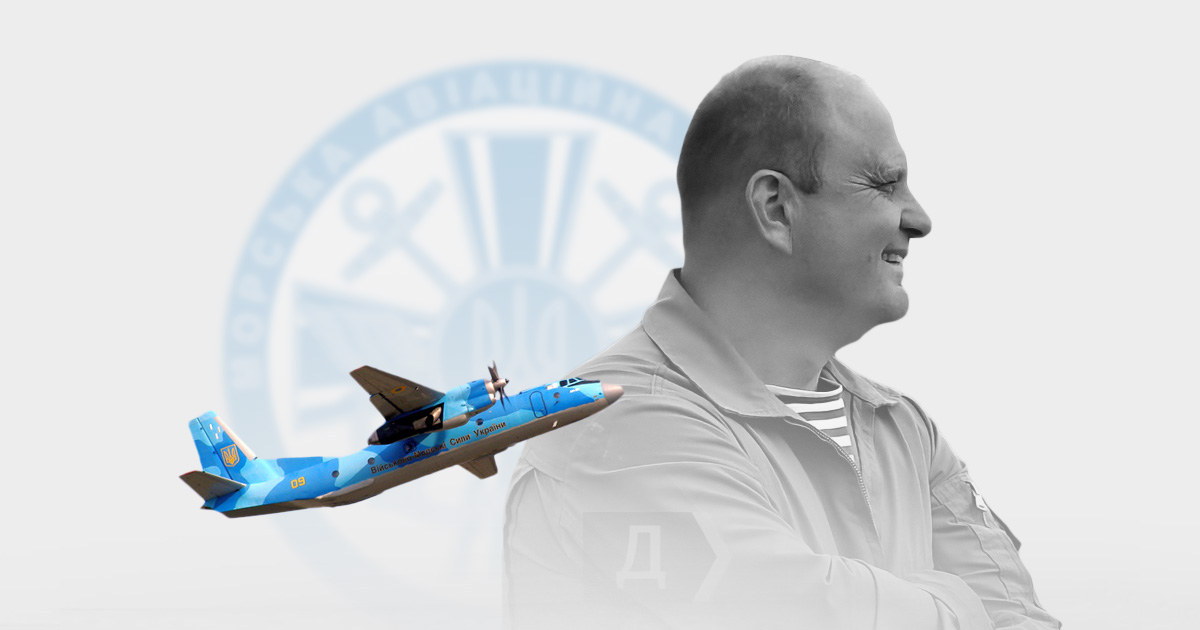How Ukrainian Naval Aviation Fooled Russian Scouts

Every year, on the last Saturday of August, Ukraine celebrates Aviation Day. Ukrainian military aviation also includes naval aviation, which assists in the work of the navy.
The Ukrainian army took over several naval aviation units with new aircraft from the Ukrainian Soviet Socialist Republic. Over the next twenty years, the Ukrainian government reduced and merged these units until one unit was left – the 10th Naval Air Brigade. There might not have been even this one.
February 2014: Kyiv and Crimea
On February 22, 2014, the Verkhovna Rada deprived Viktor Yanukovych of his presidential post.
Hardly a week had passed, when on February 28, a truck with special operations forces of the Main Intelligence Department of the Russian Federation, where the Armed Forces of Ukraine brigade was based, appeared at the gate of the Crimean airfield "Saky". Lieutenant Colonel Ihor Bedzai, from whom the special forces demanded to let them into the territory of the military unit, served as a commander. Aviators did not let the Russians in, so they stayed near the airfield and conducted reconnaissance.
On February 29, a meeting of the newly formed National Security and Defense Council was held in Kyiv. At that time, the Russians had already seized the government and parliament of the Autonomous Republic of Crimea, Simferopol airport, as well as blocked some military units.
At the meeting, Acting President of Ukraine Oleksandr Turchynov put the question to the vote: should they introduce martial law in Ukraine? He was the only one to have voted “yes”.
Other members of the National Security and Defense Council of Ukraine feared that such actions would only intensify Russian aggression. It was then acting Defense Minister Ihor Teniukh who shared that opinion. Teniukh said that in the Ukrainian army, only about five thousand people were mission capable. "We can send them to Crimea, but it will not solve the problem. We'll just put them down there," Teniukh said.
Some people still arrived in Crimea. The General Staff learned about Russian plans back in January 2014 and had since trained paratroopers for the defense of the peninsula. The fighters of the 25th Separate Airborne Brigade and the 3rd Separate Special Forces Regiment were in the vicinity of the military unit in Perevalne. There was no order to fight since the military of the Russian Federation was located on other parts of the Russian-Ukrainian border: Russia concentrated 38,000 troops, 761 tanks, 2,200 armoured vehicles, 720 artillery systems, 130 helicopters, and 90 attack aircraft in Kyiv, Kharkiv, and Donetsk directions.
Therefore, Kyiv has chosen a wait-and-see strategy.
Evacuation
Meanwhile, the pressure on Ukraine's naval aviation was intensifying. Senior officers of the Navy betrayed Ukraine and joined the Russian army. It was impossible to trust anyone, so the leaders of the naval brigade decided to proceed on their own.
On March 1, the brigade's chief of staff, Colonel Mykola Lytvynenko, gave an order to destroy secret documents.
Over the next few days, aviators checked the serviceability of the equipment to relocate it to the Kulbakyne airfield near Mykolaiv. On March 3, four helicopters and three fixed-wing aircraft took off from the airfield. There was no information leakage about the operation, so the Russians did not interfere.
The Ukrainian side was also unaware of the evacuation. When the first plane "An-26" landed, it was surrounded by Ukrainian special operations forces, recalls senior flight engineer Yurii Chmelyk in the documentary "Crimea, As it Was". Chmelyk took along the black labrador. The dog jumped off the plane first, which scared the military, who had expected the appearance of Russian paratroopers.
On March 5, the Hetman Sahaidachnyi frigate entered the port of Odesa, on board of which there was another Ka-27 helicopter and the crew commander, Major Oleksandr Suraikin. Having taken off from Sahaidachnyi, he left the aircraft in Kulbakyne and returned to Crimea to evacuate the repaired Ka-27. On March 7, Suraikin landed at Kulbakyne again.
When the command of the maritime brigade realized that no one would come to their aid, the flag of the brigade and the historical logbook of the unit were taken away. On March 22, the Russians seized part of the territory that the aviator had managed to control.
On April 9, most of the military left for mainland Ukraine, but there were still twenty people left in Crimea. The Russian Federation allegedly wanted to give Ukraine back the property of the military units that had not deserted into the Russian army but later refused.
Pending return to Saky
Ihor Bedzai and his colleagues saved a special kind of aviation. The Russians could have knocked them down. Aviators could have crashed because they were flying at low altitudes and in bad weather conditions. After all, they did not know how the Ukrainian authorities would perceive their actions. There were no orders – there was only a moral call to do as required by the oath.
In 2018, Bedzai helped create the first scientific intelligence on the evacuation of the 10th Naval Brigade. He later became Deputy Commander of the Navy for Aviation.
On May 7, 2022, he was killed in battle in the Ukrainian sky. Volodymyr Zelenskyy posthumously awarded him the title of "Hero of Ukraine", and the 10th Naval Aviation Brigade was named after the Hero of Ukraine Colonel Ihor Bedzai.
Bedzai knew who would win. In March 2014, the Russian command tried to convince him to switch sides and join the Russian side. However, the colonel replied, “You will lose anyway. Your actions are based on lies. And all actions based on lies are doomed to defeat.”


